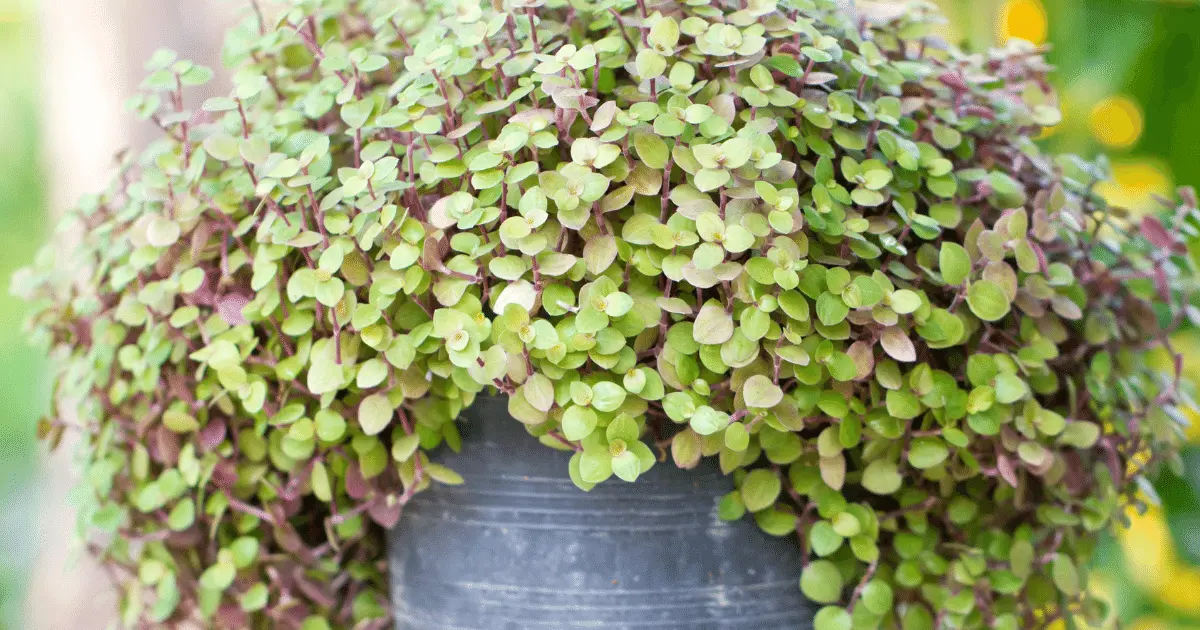The Callisia Rosato, popularly known as the pink Panther, with its attractive pink and green variegated foliage, is one of the must-have indoor plants. It gives extra attention to your room or indoor garden like no other plant. And to crown it all, it is low maintenance.
It is a miniature plant, making it suitable for homes and office decor. The origin of the plant has been traced to central and Southern America, which has a hot climate. Being a rare plant, propagating is the most typical way to grow the plant.
How to Grow the Pink Panther Plant

The beautiful pink Panther plant is a cover crop growing low on the ground. They are also great ornamental plants because they are small and beautiful. Everything about this plant is relaxing and easy, especially its propagation.
I will show you how to propagate the pink Panther using a stem cutting:
- Cut off a stem with green or partially green leaves. Stems with overly pink leaves will hardly root, making the process useless.
- Either remove leaves close to the bottom of the stem before planting. Otherwise, you stick the stem cutting in the soil mix and remove the leaves close to the soil.
- And place them in a warm place with enough light.
- Water the soil and soak it with enough water immediately after you have inserted the stem cutting.
- The root will pop up in a few weeks, and the plant will bring out new leaves. They are ready to be repotted to their permanent pot at this stage.
You can also propagate the plant through root cuttings by placing them in a smaller pot. Please put them in a warm place with a temperature range of 20-25c, and watch as the cutting start rooting within four weeks.
How to Care for The Pink Panther Plant

Now that I have shown you how to propagate the plant, you need to understand the suitable condition and environment for the pink panther plant. You do not have to worry, for it is easy to care for, and you do not have to be an expert to get your pink panther plant blossoming.
Soil Requirement for Pink Panther Plant
A well-draining soil with finer grains is suitable for this water-loving plant to thrive and blossom. It would be best to refrain from regular soil mix as this may prevent proper water draining and affect the plant’s roots.
Adding perlite to your soil mix is advisable because it will help boost water draining.
Temperature Requirement for Pink Panther Plant
You should note that the pink panther plant is succulent and will flourish at high temperatures. An ideal temperature range of 18°C (64°F) and 22°C (72°F) is best for this plant, and the fall in temperature at night will be ok as long as other conditions are good.
Light Requirement for Pink Panther Plant
The plant needs enough light, and this indoor plant is among those that need adequate sunlight to bloom. Place the plant where they can get enough sunlight and watch the leaves blossom in its pink and green variegated foliage.
However, it is advisable to place the plant under shade in the summer to protect the leaves. While in the winter, take the plant outdoors for some light during the day to keep them looking good and healthy.
Fertilizer Requirement for Pink Panther Plant
You should fertilize this plant lightly if you want to boost the growth of the pink panther plant. Use indoor houseplant fertilizers that contain no urea for your indoor pink panther plant.
Repotting the Pink Panther Plant
The pink panther plant is a fast grower; it will take at least a year for the root to grow beyond its planting pot. It would be best if you repotted once a year to give the root space to develop and ensure the plant blossom.
Pruning of the Pink Panther Plant
Since the plant is creepy and fast-growing, you should trim it at least once a week to keep it in shape. Otherwise, the plant is disorderly and scattered around, making it look appealing.
Trimming away the solid green stems will grow only green leaves and prevent reverting. Leaving the green stems may cause more green leaves to develop and lose the value of the Pink Panther.
Pest and Diseases Associated with The Pink Panther
Like most houseplants, the pink Panther is affected by common pests and diseases. They are disturbed mainly by the spider mite, and it will be best to monitor and pick up these plants early or use any homemade insecticides.
Frequently Asked Questions
What causes Leggy Growth in Pink Panther Plants?
Leggy growth does occur when the plant does not get enough sunlight and when you do not get prone to your plant. The process of leggy growth occurs when a stem grows longer between leaves. This kind of growth may happen when the plant is not getting enough sunlight and the stem seek to expand beyond to access sunlight and survive.
Why do pink panther leaves turn brown or get discolored?
The leaves may turn brown due to excess exposure to direct sunlight, which dries and kills the plant. Also, the plant may not have access to water to nourish the leaves, and they start wilting.
Does the Pink Panther Plant Grow During The Winter?
In suitable conditions, you can grow your pink panther plant during the winter. Get it out during the day to get enough sunlight, and take it inside at night to protect it from the weather.
